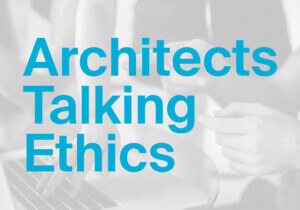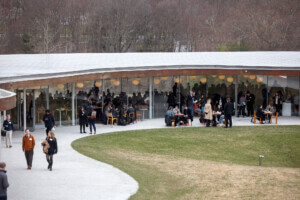Architecture is a business.
Whether architects openly admit it or not, running an architecture firm works like any other company. Firms—and their founders, leaders, and stakeholders—are beholden to the real-world forces of the economy. You can’t make payroll with love of the work or faux-progressive platitudes. Employees can’t pay their rent with the firm’s prestige or latest listicle highlight. Under our existing economic system, businesses must consider profitability to be able to pay their employees a living wage, operate sustainably and ethically, and continue offering their services.
So why don’t architects act like business people?
It’s easy to point to the current economic climate, the training of young designers in architecture schools, or a lack of business knowledge for the struggle owners face in running a profitable firm. Do all these factors affect the success of a business? Absolutely.
The uncomfortable reality is that many celebrated works of capital-A architecture are propped up on the labor of overworked designers, unpaid internships, and exploitative business practices that leave these workers in the lurch financially. Idealizing the architectural profession as one of noble artistry, creative genius, and inherent progressivism disguises the failings of firms as businesses. The emotional, financial, and physical sacrifices of overtime-exempt designers have carried the most lauded architecture firms of our time for too long. When you can’t pay your employees enough to live in the cities you’re designing in, you are failing as a business.
Over the past few years, the COVID-19 pandemic has ignited massive discussions on labor in architecture. It seems like every month or two, there’s a new wave of controversy surrounding a firm that has advertised a job with a shockingly low salary, a requirement for hours of overtime work, or a disproportionate level of experience to the job title.
As career consultants for architects that are looking to make a change, we’re flooded with stories from overworked, underpaid, and burned-out architects on a near-daily basis. They come to us because architecture is not a sustainable career path for their wellbeing.
We argue that the question of how architecture needs to change as a business must prioritize the needs of employees, clients, and communities of firms. It doesn’t matter how awe-inspiring a firm’s projects are; if they are subsidized by the health, relationships, and undercut salaries of architects, then the business responsible for that building should not exist.
We need to eliminate the mentality that employees should work like they own the firm. They don’t.
We hear so many excuses from owners about why they can’t raise wages or fees, including scope-creep, unrealistic client expectations, and market conditions. But that burden can’t simply be transferred to employees. There are tiers of responsibility.
It’s not the intern’s fault that projects experience scope-creep. It’s not the project manager’s fault that the client has expectations of a deadline that is promised from the top but not feasible for the team. It’s not the principal’s fault that the market is in flux.
However, it is the fault of a firm’s leadership for not being able to communicate appropriate value and reasonable expectations with the client.
Firm employees shouldn’t have to work like they own the business because they don’t own the business.
The reality is that the economy is what it is, and every business needs to roll with the conditions it produces. It is also a simple fact that projects will experience scope-creep. Educate clients and employees on what is in scope, what is not, and employ contracts and mechanisms to charge appropriately when something needs to be adjusted. We should be familiar with how our friends on the construction side do this. It is called a change order. This applies to architects as well.
Fellow architects are also not off the hook: Stop undercutting each other and accepting jobs that pay in prestige but leave designers unable to afford rent in the cities they help create.
The AIA can affect change here, too. Isn’t the organization supposed to be acting in the best interests of the profession? It can do so by altering their code of ethics to have language that is in-line with current laws around collusion and price fixing. Currently, the AIA code says that architects cannot speak of their fees or share their margins and must leave the room where any such discussion is taking place. Discussion is not collusion, and the Federal Trade Commission agrees. We are not suggesting that we act against the spirit of competition, but our competitive drive has pushed us to compete in a race to the bottom, and the profession is well aware of it.
That race to the bottom is dragging down workers alongside firm owners.
If you—yes, You—are in a position where you are leading an architecture firm of any size, are in charge of managing actual human beings, and are in a position to affect change in the built environment, it is your mandate to advocate for the value of architects’ work, the profession, and the people who support that endeavor. If you cannot do that, you are failing, and you deserve to be held accountable for your actions. If many of us are failing, the profession at large deserves an open discourse about how to correct this shortcoming.
Yes, it is difficult to run a business of any size, but so is building a building.
We’ve figured out how to do that. Now let’s figure out how to design our businesses as well as we design our buildings. There is so much creative work to be done to fix this problem. Stop hiding behind difficulties that are standing in the way.
Jake Rudin and Erin Pellegrino operate Out of Architecture. This issue—and many others—are the subject of their recent book Out of Architecture: The Value of Architects Beyond Traditional Practice. This article was written with contributions from Noura Alhariri of the Out of Architecture team.











